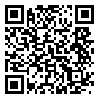Volume 24, Issue 3 (11-2018)
Back to this Issue |
Back to browse issues page
Download citation:
BibTeX | RIS | EndNote | Medlars | ProCite | Reference Manager | RefWorks
Send citation to:



BibTeX | RIS | EndNote | Medlars | ProCite | Reference Manager | RefWorks
Send citation to:
Sharif Nia H, Yaghoobzadeh A. Analysis of pretest-posttest studies with control group: Comparison of two types of effect sizes
. Journal of Hayat 2018; 24 (3) :261-268
URL: http://hayat.tums.ac.ir/article-1-2514-en.html
URL: http://hayat.tums.ac.ir/article-1-2514-en.html
1- Dept. of Nursing, School of Nursing and Midwifery Amol, Mazandaran University of Medical Sciences, Sari, Iran , h.sharifnia@mazums.ac.ir
2- Dept. of Geriatric Nursing, School of Nursing and Midwifery, Tehran University of Medical Sciences, Tehran, Iran
2- Dept. of Geriatric Nursing, School of Nursing and Midwifery, Tehran University of Medical Sciences, Tehran, Iran
Abstract: (5325 Views)
The pre-post test study with control group is one of the most widely used methods to evaluate clinical research and educational designs. The data analysis of this design is done in a variety of ways. However, considering that the interaction between the pre-test score and intervention score is considered a threat for external validity in these types of study designs, the ANCOVA test is recommended for its control. Also, due to the importance of accurately estimating the effect size of intervention, it is necessary to assess the differences in the accuracy of its estimate among conventional methods. In this regard, the ANCOVA test, a common linear model that combines the analysis of variance and regression, estimates the effect size better than other common analyzes. In this article, the data of a hypothetical study were analyzed using these two tests to clarify the different results between the independent t-test and the ANCOVA test. The result showed that the obtained effect size from ANCOVA was greater than that from the independent t-test. Therefore, it is suggested that the ANCOVA test be used to analyze the data and estimate the effect size in the pre-post test designs with control group.
Send email to the article author
| Rights and permissions | |
 |
This work is licensed under a Creative Commons Attribution-NonCommercial 4.0 International License. |






